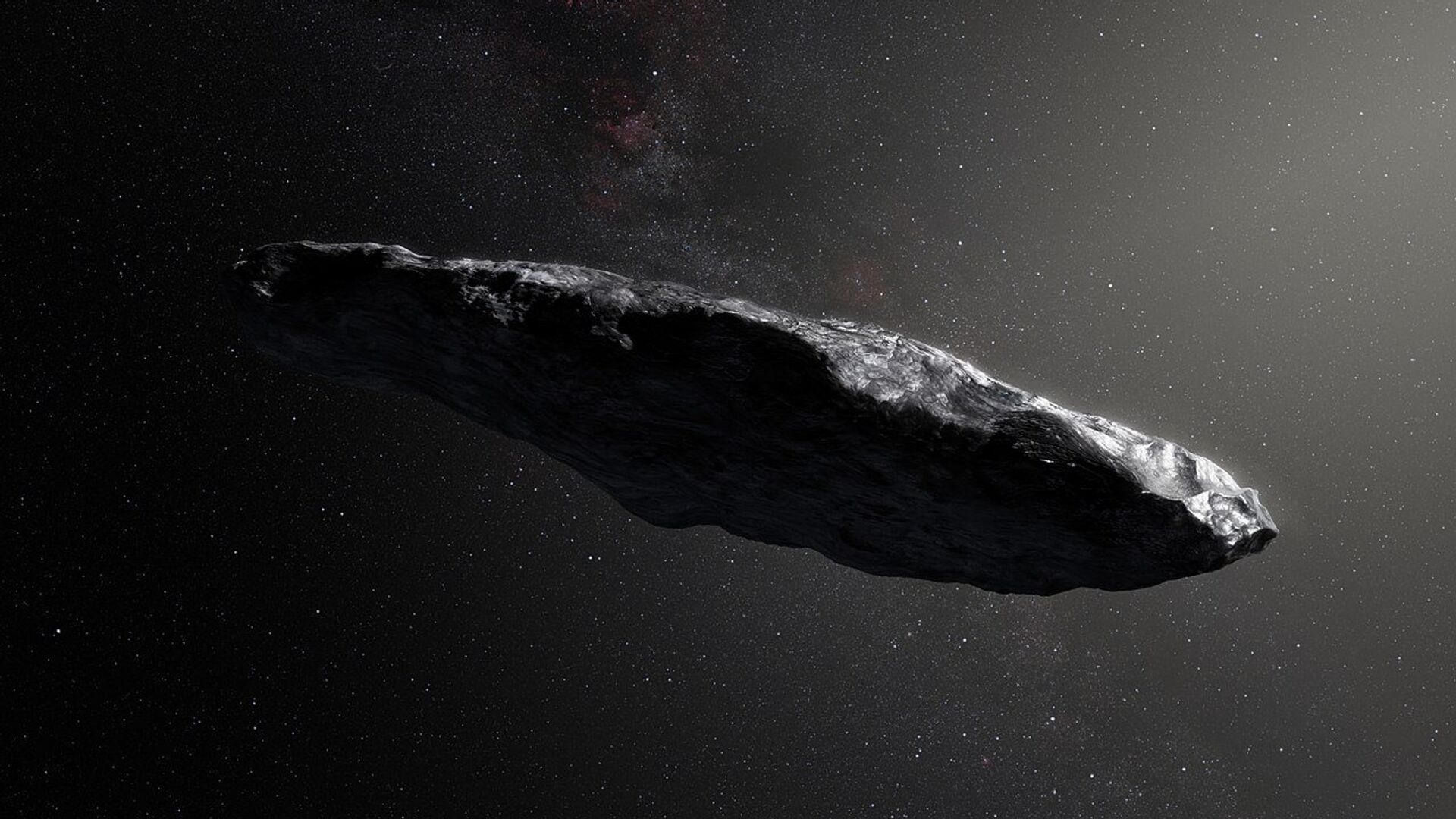https://sputnikglobe.com/20230323/riddle-of-mysterious-interstellar-travelers-acceleration-potentially-solved-in-new-study-1108734433.html
Riddle of Mysterious Interstellar Traveler's Acceleration Potentially Solved in New Study
Riddle of Mysterious Interstellar Traveler's Acceleration Potentially Solved in New Study
Sputnik International
Having been detected on its way out of our system, 'Oumuamua exhibited a number of peculiar properties, such as non-gravitational acceleration that apparently wasn’t caused by outgassing.
2023-03-23T18:56+0000
2023-03-23T18:56+0000
2023-03-23T18:56+0000
science & tech
oumuamua
acceleration
study
https://cdn1.img.sputnikglobe.com/img/106585/09/1065850986_0:73:1280:793_1920x0_80_0_0_665e76d05314fc5e88e96e1275736739.jpg
A new study published online this week has offered a possible explanation for certain properties of 'Oumuamua – an interstellar object that was discovered by astronomers passing through the Solar System in 2017.The authors of a new paper, Jennifer B. Bergner from UC Berkeley and Darryl Z. Seligman from Cornell University, postulate that this acceleration was probably a product of the release of hydrogen from H2O ice in the object.The researchers suggested that hydrogen entrapped in 'Oumuamua was released when it got closer to the Sun, thus affecting the object's orbit.Previously, Harvard astronomer Avi Loeb suggested that 'Oumuamua could be an artificial object rather than some sort of a natural space object.
Sputnik International
feedback@sputniknews.com
+74956456601
MIA „Rosiya Segodnya“
2023
News
en_EN
Sputnik International
feedback@sputniknews.com
+74956456601
MIA „Rosiya Segodnya“
Sputnik International
feedback@sputniknews.com
+74956456601
MIA „Rosiya Segodnya“
oumuamua acceleration, interstellar object
oumuamua acceleration, interstellar object
Riddle of Mysterious Interstellar Traveler's Acceleration Potentially Solved in New Study
Having been detected on its way out of our system, 'Oumuamua exhibited a number of peculiar properties, such as non-gravitational acceleration that apparently wasn’t caused by outgassing as it left no trail of gas or dust in its wake.
A new study published online this week has offered a possible explanation for certain properties of 'Oumuamua – an interstellar object that was discovered by astronomers passing through the Solar System in 2017.
The authors of a new paper, Jennifer B. Bergner from UC Berkeley and Darryl Z. Seligman from Cornell University, postulate that this acceleration was probably a product of the release of hydrogen from H2O ice in the object.
The researchers suggested that hydrogen entrapped in 'Oumuamua was released when it got closer to the Sun, thus affecting the object's orbit.
"For a comet several kilometers across, the outgassing would be from a really thin shell relative to the bulk of the object, so both compositionally and in terms of any acceleration, you wouldn't necessarily expect that to be a detectable effect," Bergner said, as quoted in a UC Berkeley press release. "But because 'Oumuamua was so small, we think that it actually produced sufficient force to power this acceleration."
Previously, Harvard astronomer Avi Loeb suggested that 'Oumuamua could be an artificial object rather than some sort of a natural space object.



